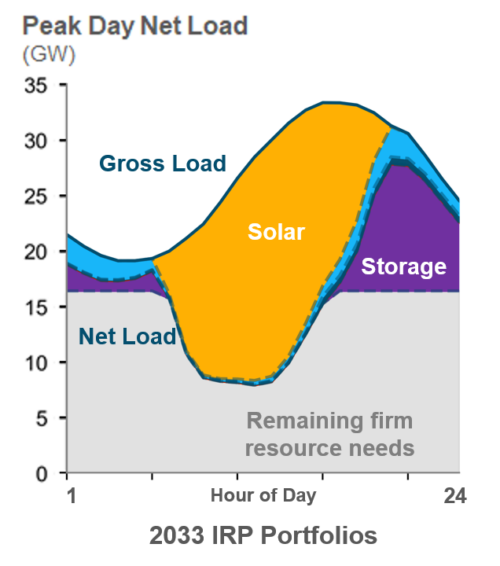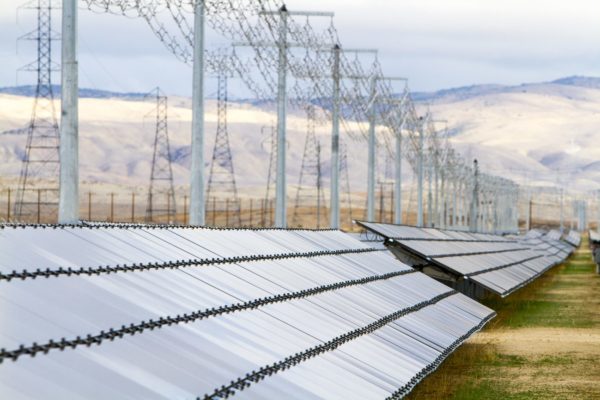- all
- Regulatory strategy and litigation support
- Large energy user services
- Energy markets and financial analysis
- Energy and environmental policy
- Cost of service and rate design
- Distributed energy resources
- Transmission planning and pricing
- Resource planning and procurement
New York Integration Analysis for Climate Action Council Draft Scoping Plan | NYSERDA, 2021 – ongoing
E3 is supporting NYSERDA in its analysis to inform the Climate Action Council’s Scoping Plan. E3 has developed scenarios showing how New York could achieve carbon neutrality as outlined in the Climate Leadership and Community Protection Act (CLCPA). This work includes a detailed analysis of buildings, transportation, industry, electricity generation, non-combustion, low-carbon fuels, and negative emissions using E3’s suite of modeling tools (PATHWAYS, RESOLVE, and RECAP) and parallel modeling efforts at NYSERDA. E3 also assessed the economy-wide cost of decarbonization and compared it to the societal benefits of reduced greenhouse gas emissions and monetized benefits of improved air quality through reduced combustion. E3’s work includes detailed modeling of the CLCPA electric sector targets, including the 70×30 and 100×40 goals as well as technology-specific targets such as the 9 GW offshore wind target.
People
Integrated Resource Plan | California Public Utilities Commission, 2021
E3 has provided comprehensive technical and advisory support to the Energy Division of the California Public Utilities Commission (CPUC) in its administration of the state’s IRP program, mandated by the passage of SB 350 in 2016. E3 worked with CPUC staff to develop the structure of the IRP program including a three-year modeling cycle in which Staff prepares a system-wide plan that informs the California Independent System Operator (CAISO)’s annual Transmission Planning Process (TPP) and informs Load-Serving Entities integrated resource plans in alternate years.
E3 has helped the CPUC design an optimal “Preferred System Plan” for the combined utilities that incorporates the resource procurement plans of the LSEs and complies with the state’s clean energy policy requirements. In the 2020-2021 cycle, the policy requirements considered include a 60% RPS by 2030 and SB 100 by 2045, and a statewide greenhouse gas emissions target of 38 million metric tons (MMT) by 2030, while capturing the operational and reliability challenges encountered at high penetrations of variable renewable generation. E3 also supported the Energy Division’s development of a mid-term reliability order requiring the procurement of 11.5 GW of effective capacity by 2026. As part of this process, E3 evaluated dozens of scenarios reflecting alternative assumptions about load forecasts and electrification, resource costs, the availability of offshore wind and out-of-state wind, the ability of end-use loads to operate flexibly, and a variety of other input parameters.
People
Net Zero Carbon Pathways Study | Omaha Public Power District, 2021
To support the development of its 2021 Integrated Resource Plan (IRP), Omaha Public Power District (OPPD) engaged E3 to perform a comprehensive study on various pathways for OPPD to achieve net zero carbon by 2050. With a goal of net zero carbon emissions by 2050, OPPD sought a study to understand different pathways to achieve their target emissions, reliability, costs, and generation. E3’s study consisted of three primary phases: multi-sector modeling using the E3 PATHWAYS model to develop multiple electricity sector demand forecasts; reliability and resiliency analysis using the E3 RECAP model; and portfolio optimization using the E3 RESOLVE model to develop cost-optimal electricity portfolios that achieved both net-zero carbon and target reliability by 2050. E3 found that OPPD can achieve net zero while balancing affordability and reliability and that all net zero pathways require a cessation of coal generation and reduced use of fossil generation. A mix of new low-carbon resources including renewable energy, energy storage, and community-wide energy efficiency will be required as well as firm capacity resources, which will be needed to maintain resource adequacy.
Publications
People
Pacific Northwest Resource Adequacy Study | Pacific Northwest Utilities, 2018-19
E3 was retained by a consortium of public and private utilities in the Pacific Northwest to evaluate regional resource adequacy under a resource mix that, for both economic and public policy reasons, is transitioning toward higher levels of renewable energy and storage and away from coal. The study used E3’s RECAP model to examine the reliability of different portfolios and reliability contributions of individual resources such as wind, solar, hydro, and energy storage. The study examined both near-term (2030) and long-term (2050) systems. The results found that the Northwest region needs new capacity in the near term to meet growing loads and compensate for planned coal retirements. In the long term, E3 found that deep decarbonization could be achieved if sufficient firm capacity was retained for reliability during times of low wind, solar, and hydro generation. While wind, solar, hydro, and battery storage could provide reliability benefits to the system, replacing all carbon-emitting firm resources with these alternatives was found to be impractical due to the large overbuild required. Study sponsors included the Public Generating Pool (PGP), a consortium of publicly owned utilities in Washington and Oregon; Avista Corporation; Puget Sound Energy; and Northwestern Energy.
Publications
- For a Smart Transition to 100% Clean Energy: Renewables, Storage and, in Some Cases, New Gas
- Resource Adequacy in the Pacific Northwest
People
Long-Run Resource Adequacy Under Deep Decarbonization Pathways for California | Calpine, 2018-19
Building on E3’s prior work for the California Energy Commission, this study examines which resources will be needed to maintain resource adequacy in a future California electricity system that is deeply decarbonized and heavily dependent on renewable energy and electric energy storage to meet California’s economy-wide 2050 greenhouse gas reduction goal. Whereas E3’s previous work identified resources California should build to meet GHG and renewable energy targets, this study takes an in-depth look at electric system reliability requirements – and specifically which resources are needed to maintain acceptable long-run reliability in a cost-effective manner. After examining resource adequacy through loss-of-load-probability (LOLP) modeling across thousands of simulated years using its RECAP model, E3 found that achieving economy-wide goals does not require full decarbonization of the electricity sector and that the least-cost electricity portfolio to meet 2050 economy-wide goals includes very large quantities of solar + storage and retains 17 GW to 35 GW of firm natural gas capacity for reliability.
Publications
- For a Smart Transition to 100% Clean Energy: Renewables, Storage and, in Some Cases, New Gas
- Long-Run Resource Adequacy Under Deep Decarbonization Pathways for California
People
Flexibility assessment for wind integration | Portland General Electric, 2014–15
After Oregon set renewable portfolio standard (RPS) goals of 25 percent by 2015 and 50 percent by 2040, Portland General Electric (PGE) turned to E3 to study the flexible generation capacity necessary to meet wind integration needs. Our studies considered the variability, uncertainty, and timing of renewable energy output, and we considered alternative resources such as flexible combined cycle gas turbine plants, frame and aero-derivative combustion turbines, reciprocating engines, and energy storage. Our analysis informed the resource procurement strategy in PGE’s 2016 integrated resource plan. The studies found that PGE’s need for within-hour operational flexibility is not a significant driver of the value or need for new gas resources, even at a 50 percent RPS.
People
Least-cost planning for achieving Hawai‘i’s 100 percent RPS | HECO, 2015–present
With more than two decades of experience in Hawai‘i, E3 is now helping the Hawaiian Electric Company (HECO) plan for the grid transformation needed to reach 100 percent renewable generation by 2045. Our long-term analysis supported development of the utility’s Power System Improvement Plan (PSIP), with modeling centered on individual island plans and interisland transmission. The study develops least-cost expansion plans for each island using a variety of policy cases and fuel price forecasts. E3 used its Renewable Energy Solutions model (RESOLVE) to explore the economic trade-off between renewable curtailment and investments in storage, and to develop least-cost expansion plans consistent with each scenario. We also solicited and incorporated stakeholder input. HECO filed the PSIP, including testimony and support from E3, with the Hawai‘i Public Service Commission in December 2016.
Publications
People
Investigating a higher RPS for California | LADWP, PG&E, SMUD, SDG&E, and SCE, 2013–14
On behalf of California’s five largest electric utilities, E3 evaluated the challenges, costs, and potential solutions for achieving a 50 percent renewables portfolio standard (RPS) by 2030. Using our Renewable Energy Flexibility Model (REFLEX), we performed detailed operational studies of power system dispatch flexibility constraints under high levels of wind and solar generation. We found that achieving a 50 percent RPS is feasible and that California’s power system can remain reliable as long as renewable resources can be dispatched in response to grid needs. Our study recommended strategies for integrating higher levels of renewables, including greater regional coordination, renewables portfolio diversity, flexible generation capacity, flexible loads, and energy storage. We found that deploying these strategies would reduce the need to curtail renewables, lowering the cost of reaching 50 percent RPS.
Publications
- Investigating a Higher Renewables Portfolio Standard in California: Summary
- Investigating a Higher Renewable Portfolio Standard for California: Full Report
People
Procurement and rate design | Lower Valley Energy, 2001–16
E3 has provided procurement and rate-making advice to Wyoming’s Lower Valley Energy (LVE) since 2001. Our long-term procurement plans have carefully addressed LVE’s need to mitigate cost increases due to changes in either market prices of energy or Bonneville Power Administration’s rates. We have also helped LVE assess the merits of different rate structures and compare the value of building generation in its own service territory with the costs of building new transmission facilities to access alternative power sources. Most recently, we provided an independent evaluation of the costs and benefits of a potential merger with a neighboring co-op utility.






